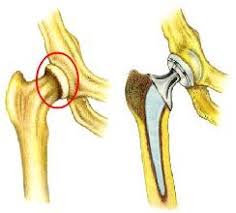
develop devices and procedures that solve medical and health-related problems by combining their knowledge of biology and medicine with engineering principles and practices. Many do research, along with medical scientists, to develop and evaluate systems and products such as artificial organs, prostheses (artificial devices that replace missing body parts), instrumentation, medical information systems, and health management and care delivery systems. Biomedical engineers also may design devices used in various medical procedures, imaging systems such as magnetic resonance imaging (MRI), and devices for automating insulin injections or controlling body functions. Most engineers in this specialty need a sound background in another engineering specialty, such as mechanical or electronics engineering, in addition to specialized biomedical training. Some specialties within biomedical engineering are biomaterials, biomechanics, medical imaging, rehabilitation engineering, and orthopedic engineering.
Biomedical engineering is a highly interdisciplinary field, influenced by (and overlapping with) various other engineering and medical fields. This often happens with newer disciplines, as they gradually emerge in their own right after evolving from special applications of extant disciplines. Due to this diversity, it is typical for a biomedical engineer to focus on a particular subfield or group of related subfields. There are many different taxonomic breakdowns within BME, as well as varying views about how best to organize them and manage any internal overlap; the main U.S. organization devoted to BME divides the major specialty areas as follows:

How do biomedical engineers differ from other engineers?
Biomedical engineers must integrate biology and medicine with engineering to solve problems related to living systems. Thus, biomedical engineers are required to have a solid foundation in a more traditional engineering discipline, such as electrical, mechanical or chemical engineering. Most undergraduate biomedical engineering programs require students to take a core curriculum of traditional engineering courses. However, biomedical engineers are expected to integrate their engineering skills with their understanding of the complexity of biological systems in order to improve medical practice. Thus, biomedical engineers must be trained in the life sciences as well.
Is biomedical engineering right for you? Scientist? Engineer? Teacher? CEO? Manager? Salesperson?
A university degree in biomedical engineering will prepare you for all of these professions and more. Biomedical engineers use their expertise in biology, medicine, physics, mathematics, engineering science and communication to make the world a healthier place. The challenges created by the diversity and complexity of living systems require creative,
knowledgeable, and imaginative people working in teams of physicians, scientists, engineers, and even business folk to monitor, restore and enhance normal body function. The biomedical engineer is ideally
trained to work at the intersection of science, medicine and mathematics to solve biological and medical problems.
 What do biomedical engineers do?
What do biomedical engineers do?
Perhaps a simpler question to answer is what don’t biomedical engineers do? Biomedical engineers work in industry, academic institutions, hospitals and government agencies. Biomedical engineers may spend their days designing electrical circuits and computer software for medical instrumentation. These instruments may range from large imaging systems such as conventional x-ray, computerized tomography (a sort of computer enhanced three-dimensional x-ray) and magnetic resonance imaging, to small implantable devices, such as pacemakers, cochlear implants and drug infusion pumps. Biomedical engineers may use chemistry,physics, mathematical models and computer simulation to develop new drug therapy. Indeed a considerable number of the advances in understanding how the body functions and how biological systems work have been made by biomedical engineers. They may use mathematical models and
statistics to study many of the signals generated by organs such as the brain, heart and skeletal muscle. Some biomedical engineers build artificial organs, limbs, knees, hips, heart valves and dental implants to replace lost function; others are growing living tissues to replace failing organs. The development of artificial body parts requires that biomedical engineers use chemistry and physics to develop durable materials that are compatible with a biological environment.
Biomedical engineers are also working to develop wireless technology that will allow patients and doctors to communicate over long distances. Many biomedical engineers are involved in rehabilitation–designing better walkers, exercise equipment, robots and therapeutic devices to improve human performance. They are also solving problems at the cellular and molecular level, developing nanotechnology and micromachines to repair damage inside the cell and alter gene function. Biomedical engineers are also working to develop three-dimensional simulations that apply physical laws to the movements of tissues and fluids. The resulting models can be invaluable in understanding how tissue works, and how a prosthetic replacement, for example, might work under the same conditions. Some biomedical engineers solve biomedical problems as physicians,
business managers, patent attorneys, physical therapists, professors, research scientists, teachers and technical writers. While these careers often require additional training beyond the bachelor’s degree in biomedical engineering, they are all appropriate careers for the person trained in
biomedical engineering. Sometimes electrical, mechanical, computer, or other types of engineers may find themselves working on bioengineering related problems. After a few years, they may have so much biomedical related expertise that they can be considered biomedical engineers.








